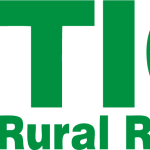How important is considering soybean relative maturity in eastern Nebraska? It can be significant depending on your goals. Spreading out harvest to manage seed moisture at harvest, early harvest for marketing, early harvest to seed a cover/forage crop or winter wheat cash crop, or later relative maturities for timing rainfalls in mid to late August are among the reasons I hear most from growers strategically utilizing various soybean maturities. Can we accomplish all of these goals while maintaining or increasing soybean yield?
First, is there a general recommendation for an appropriate relative maturity by location in the U.S. Faculty at numerous universities across the Midwest provided variety trial data to University of Wisconsin researchers to help create a new delineation for where relative maturities should be planted across the United States in 2017. This kind of work was last done in 1970 and 2003. For eastern Nebraska, the data suggests the ideal relative maturity is around 2.5 bordering South Dakota to about at 3.8 along the Kansas border. A University of Nebraska-Lincoln led producer survey focused on the soybean yield gap for various climate and soils across the United States and found there was a consistent trend in Nebraska of slightly reduced relative maturity varieties with higher yields.
FIRST Seed Tests has been conducting third-party soybean variety testing in northeast and southeast Nebraska since 2012. When I conducted analysis of the FIRST Seed Tests data from 2012-2016, I found that relative maturity is not a large factor in explaining yield variation unless you get the outside the relative maturity range for Nebraska.
New on-farm research by farmers (Seward, York, and Richardson counties) through the Nebraska On-Farm Research Network in 2018 and 2019 is demonstrating that shorter season soybean varieties with relative maturities of 2.1-2.7 can yield as well as fuller season varieties with relative maturities of 3.0-3.4.
Years ago when I ran the variety trials in South Dakota, we had two rainfed locations about 30 miles apart with the same 70 varieties. One location missed most of the August rainfalls and there was a strong yield correlation with relative maturity favoring the shorter season varieties. However, the other location received good rainfall in August resulting in a strong yield correlation for fuller season varieties. The other reason to diversity soybean relative maturity on the farm is for risk management on rainfed acres.
Can we accomplish all of the goals mentioned earlier while maintaining or increasing soybean yield with planting various relative maturities? Yes. Therefore, growers and agronomist should look at variety yield performance across a range of relative maturities and then start selecting other important traits to address yield limiting field factors (i.e. sudden death syndrome resistance). You can take advantage of diversifying and leveraging various relative maturities by strategically placing yield-proven short-season varieties on specific fields. These specific fields may be where cover crops will help the most or where you want to capture the yield benefit of early October planted winter wheat while still planting full season varieties on your other acres. My general rule of thumb is about 1 day earlier to maturity for each 0.1 relative maturity, so about 7 to 10 days earlier from a 2.4 to a 3.4 relative maturity within the same company. Know your crop, know your tech, know your bottom line.

